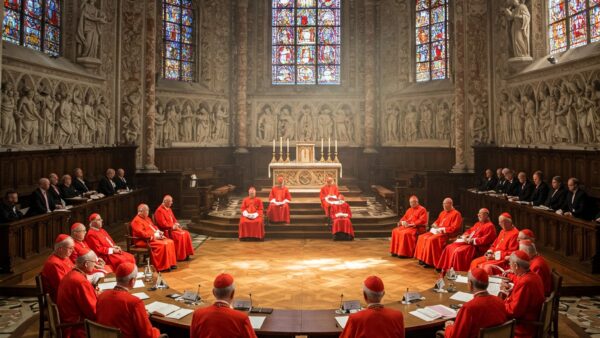On October 31, 1517, a momentous event took place in the small town of Wittenberg, Germany. That would ignite a theological and cultural revolution—the posting of Martin Luther’s Ninety-Five Theses on the door of the Castle Church. This act, seemingly simple at the time, had profound implications, sparking the Protestant Reformation.
What Were the Ninety-Five Theses on October 31, 1517?
Martin Luther’s Ninety-Five Theses, also known as the “Disputation on the Power and Efficacy of Indulgences,” were a list of propositions or arguments challenging the practices of the Catholic Church, particularly regarding the sale of indulgences. In essence, Luther questioned the idea that individuals could purchase their salvation through monetary contributions to the Church.
The Ninety-Five Theses encompassed various theological points, but their core message revolved around the belief in salvation by faith alone, rather than through external works or financial contributions. Luther’s theses laid the foundation for what would become the theological principles of Protestantism.
What Caused 1517 Luther to Post His 95 Theses on the Church Door at Wittenberg?
Several factors contributed to Martin Luther’s decision to post the Ninety-Five Theses:
- Indulgences Controversy: Luther was deeply troubled by the sale of indulgences, which promised the remission of sins and a reduction in time spent in purgatory in exchange for monetary donations. This practice had become a major fundraising tool for the Church.
- Theological Convictions: Luther’s growing theological convictions led him to challenge what he saw as unbiblical practices within the Church. His studies of the Bible had led him to the conclusion that salvation was a gift from God, received through faith alone.
- Desire for Debate: Luther initially intended the Ninety-Five Theses to spark a scholarly debate within the Church. He sought to engage in a theological discussion about the sale of indulgences and related matters.
What Did Luther Nail to the Castle Church of Wittenberg Door in 1517?
While the popular image depicts Martin Luther dramatically nailing the Ninety-Five Theses to the Castle Church door. Historical evidence suggests that the specific act of nailing may not have happened in the dramatic fashion often portrayed. Instead, Luther likely sent the theses to the Archbishop of Mainz and Magdeburg, Albert of Brandenburg, as well as posting them in the customary manner for academic debates, which included placing them on the church door.
The act of posting the theses on the church door served as an invitation for academic and theological discussion, which was common practice in the university town of Wittenberg.
What Did Martin Luther’s 95 Theses Say?
The Ninety-Five Theses covered a range of theological and ecclesiastical issues, but their central themes included:
- Indulgences: Luther criticized the sale of indulgences and questioned the Pope’s authority to grant them.
- Faith and Salvation: Luther emphasized that true repentance involved a transformation of the heart and a reliance on God’s grace for salvation. He argued that salvation was based on faith alone, not on deeds or contributions to the Church.
- Theological Challenges: Luther challenged the Church to engage in a theological debate on these matters. Expressing his desire for clarity and reform within the Church.
The Ninety-Five Theses, written in Latin, were quickly translated into German and spread throughout Europe, thanks to the newly invented printing press. They ignited a theological firestorm, prompting widespread discussions and controversy.
The Impact of Luther’s Ninety-Five Theses
The posting of Martin Luther’s Ninety-Five Theses marked the beginning of the Protestant Reformation. A religious and cultural movement that profoundly reshaped Western Europe. Here’s how Luther’s action transformed the world:
- Religious Transformation: The Protestant Reformation led to the establishment of Protestant denominations, including Lutheranism, Calvinism, and Anglicanism, as alternatives to the Catholic Church.
- Religious Freedom: The Reformation contributed to the development of the idea of religious freedom and the separation of church and state.
- Printing Revolution: Luther’s ideas spread rapidly thanks to the printing press, making information more accessible to a wider audience.
- Cultural Impact: The Reformation influenced art, literature, music, and education, leaving an indelible mark on Western culture.
- Political Changes: The Reformation had political repercussions, including the Wars of Religion and the emergence of nation-states.
In conclusion, Martin Luther and the Ninety-Five Theses on October 31, 1517, was a pivotal moment in history.
Martin Luther’s posting of the Ninety-Five Theses was not merely an isolated incident. It was a seismic shift that challenged the entrenched religious order of the time. Luther’s critique of the sale of indulgences and his emphasis on salvation by faith alone triggered a chain reaction of theological transformations. These developments ultimately set the stage for profound changes in Western culture and society.
As we reflect on this historic event, we cannot help but recognize its enduring significance. Martin Luther’s act of dissent transcended his time and place, shaping the very foundations of modern Western thought and belief. The ripple effects of his actions continue to resonate today, reminding us of the power of one individual’s courage and conviction to spark change on a global scale.
For a deeper exploration of this topic, you can visit Britannica’s page on the Ninety-Five Theses.

Originally posted 2023-09-15 10:43:12.




